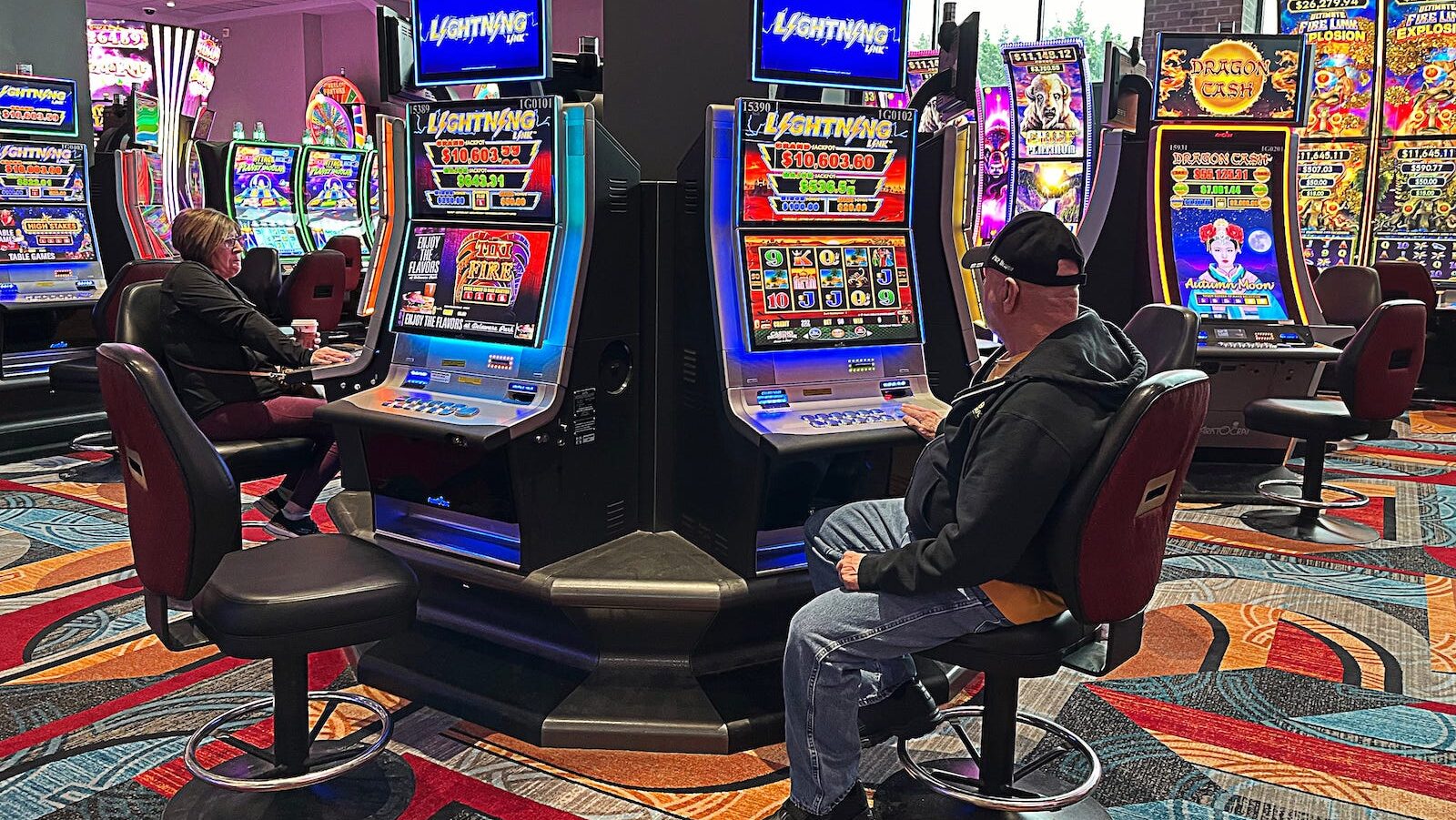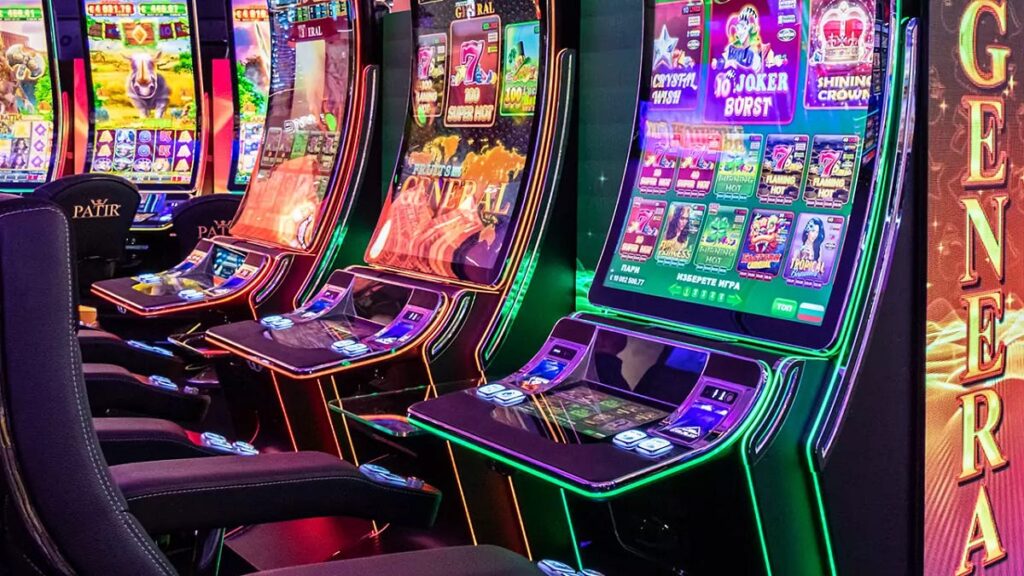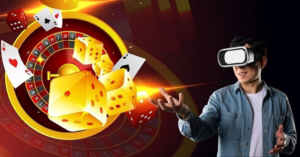
Psychology of Slot Machine Design, are one of the most popular attractions in both online and land-based casinos. Their flashing lights, engaging themes, and the thrill of hitting a jackpot make them irresistible to players. But have you ever wondered why slot machines are so addictive? The answer lies in their design, which is carefully crafted to keep you playing for as long as possible.
In this article, we’ll explore the psychology behind slot machine design, uncovering the techniques casinos use to captivate players and keep them coming back for more. By understanding these strategies, you can make more informed decisions and enjoy a healthier relationship with slot machines.
The Allure of Slot Machines
Slot machines are designed to be visually and audibly stimulating, creating an immersive experience that draws players in. Here are some key elements that contribute to their allure:
1. Bright Lights and Colors
- Why It Works: Bright, flashing lights and vibrant colors capture your attention and create a sense of excitement.
- Psychological Impact: These visual stimuli trigger the release of dopamine, a neurotransmitter associated with pleasure and reward.
2. Engaging Themes
- Why It Works: Slot machines often feature themes based on popular movies, TV shows, or cultural icons, making them more relatable and appealing.
- Psychological Impact: Familiar themes create a sense of comfort and nostalgia, encouraging players to engage with the game.
3. Sound Effects
- Why It Works: The sounds of spinning reels, winning combinations, and celebratory music enhance the gaming experience.
- Psychological Impact: Sound effects create a sense of anticipation and excitement, making each spin feel like a potential win Psychology of Slot Machine Design.
The Role of Randomness and Near-Misses
One of the most powerful psychological tools in slot machine design is the use of randomness and near-misses. These elements keep players engaged by creating a sense of unpredictability and hope.
1. Random Number Generators (RNGs)
- What It Is: Slot machines use RNGs to ensure that each spin is independent and random.
- Psychological Impact: The unpredictability of outcomes keeps players engaged, as they never know when the next big win will come.
2. Near-Misses
- What It Is: A near-miss occurs when the reels stop just short of a winning combination, such as two out of three jackpot symbols.
- Psychological Impact: Near-misses create a sense of almost winning, which can be more motivating than an actual win. This phenomenon keeps players spinning the reels in the hope of hitting the jackpot.
The Illusion of Control
Slot machines are designed to give players the illusion of control, even though the outcomes are entirely random. This illusion keeps players engaged and encourages them to keep playing.
1. Interactive Features
- What It Is: Many modern slot machines include interactive features like bonus rounds, mini-games, and skill-based elements.
- Psychological Impact: These features make players feel like their actions influence the outcome, even though the results are still determined by RNGs.
2. Stop Buttons
- What It Is: Some slot machines have a “stop” button that allows players to stop the reels manually.
- Psychological Impact: This feature gives players the illusion of control, making them feel more involved in the game.
The Role of Rewards and Reinforcement
Slot machines are designed to provide frequent, small rewards that keep players engaged and motivated to continue playing.
1. Variable Ratio Reinforcement
- What It Is: This is a schedule of reinforcement where rewards are given after an unpredictable number of responses (spins).
- Psychological Impact: Variable ratio reinforcement is highly effective at maintaining behavior, as players never know when the next reward will come.
2. Small Wins
- What It Is: Slot machines often provide small, frequent wins to keep players engaged.
- Psychological Impact: These small wins create a sense of accomplishment and encourage players to keep spinning the reels.
The Impact of Losses Disguised as Wins (LDWs)
Psychology of Slot Machine Design, Losses disguised as wins (LDWs) are another psychological tool used in slot machine design. These occur when a player wins back less than their original bet but the machine still celebrates the win with lights and sounds.
1. What It Is
- Example: You bet $1 and win back 50 cents. The machine celebrates the win, even though you’ve actually lost 50 cents.
2. Psychological Impact
- Why It Works: LDWs create a false sense of winning, making players feel like they’re doing better than they actually are.
- Effect on Players: This can lead to prolonged play and increased spending, as players are less likely to realize they’re losing money.

The Role of Time and Money Management
Slot machines are designed to make it easy for players to lose track of time and money, encouraging prolonged play.
1. Digital Credits
- What It Is: Instead of using cash, many slot machines use digital credits to represent money.
- Psychological Impact: This abstraction makes it harder for players to keep track of how much they’re spending, leading to increased spending.
2. Autoplay Feature
- What It Is: The autoplay feature allows players to set the machine to spin automatically for a predetermined number of spins.
- Psychological Impact: This feature encourages prolonged play by making it easy for players to continue spinning without actively engaging with the game.
How to Play Responsibly
Understanding the psychology behind slot machine design can help you make more informed decisions and play responsibly. Here are some tips to keep in mind:
1. Set a Budget
- Decide how much you’re willing to spend before you start playing and stick to it.
2. Set Time Limits
- Decide how long you’ll play and set a timer to remind yourself when to stop.
3. Take Breaks
- Take regular breaks to avoid getting caught up in the excitement and losing track of time.
4. Avoid Chasing Losses
- If you’re on a losing streak, resist the urge to chase losses by increasing your bets.
5. Play for Fun
- Approach slot machines as a form of entertainment rather than a way to make money.
Conclusion
Psychology of Slot Machine Design to be engaging and addictive, using a combination of visual and auditory stimuli, randomness, and psychological tricks to keep players playing. By understanding these design elements, you can make more informed decisions and enjoy a healthier relationship with slot machines.
For more tips and strategies on responsible gambling, check out these high-authority resources:
- National Council on Problem Gambling – Resources and tools for responsible gambling.
- Gamblers Anonymous – A support network for individuals struggling with gambling addiction.
Remember, gambling should be fun and entertaining. Play responsibly, and may the reels spin in your favor!




